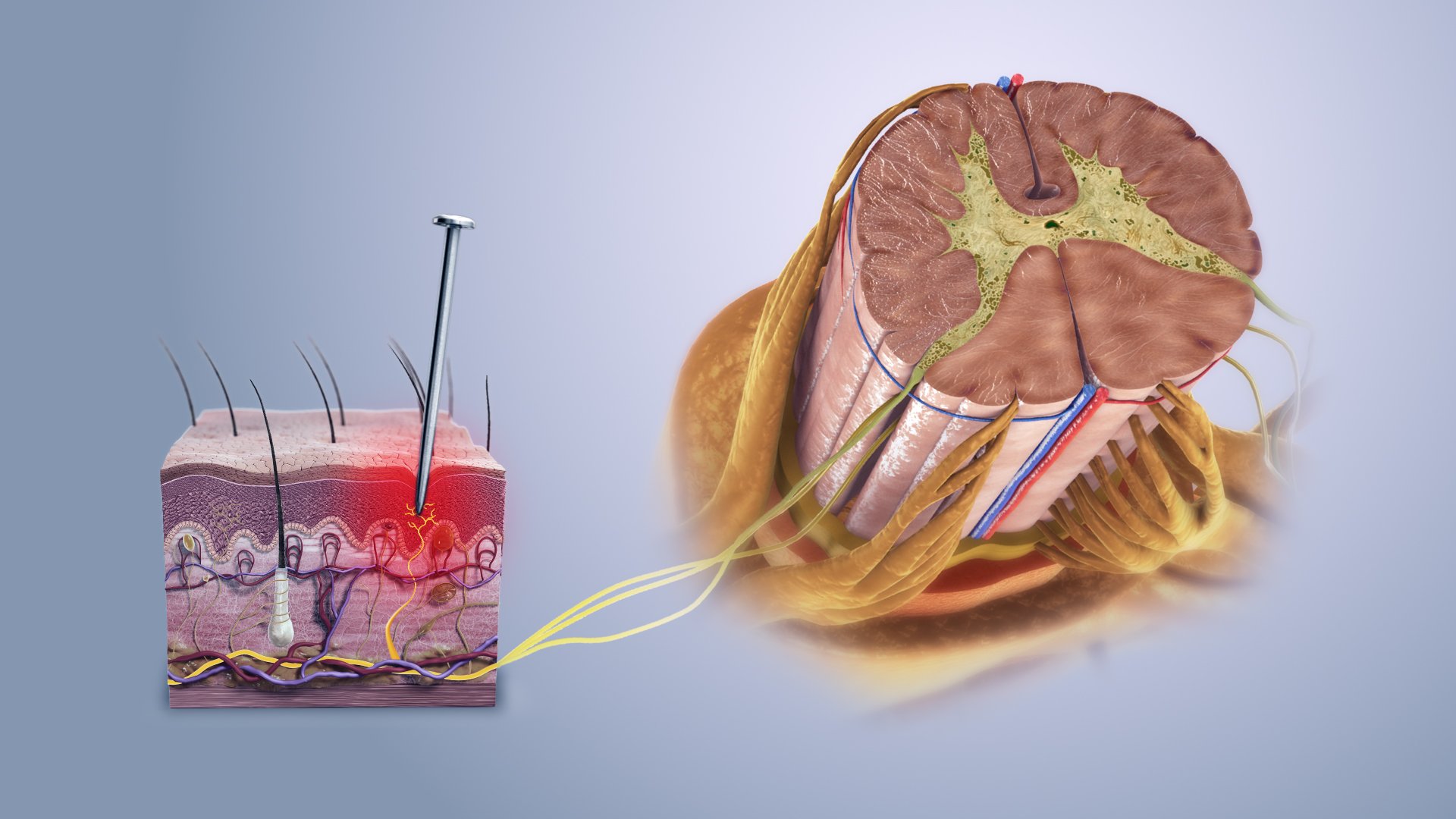Pain Reprocessing: A Breakthrough in the Understanding and Treatment of Pain



Pain Reprocessing: A Breakthrough in Understanding and Treatment of Pain
This article explains why Pain Reprocessing Therapy may be the breakthrough new pain treatment approach which could help you resolve your pain for good.
Simon Chafer is part of the Lloyd's Wellbeing Centre's team of experienced health and wellbeing professionals. He uses his training in osteopathy, chronic pain management, and pain reprocessing therapy to help his patients become pain-free and understand the deeper meaning of their pain.People in terrible pain don’t just want to ‘manage the pain’; they want it to go away. Although pain management programmes do result in some improvements in peoples’ pain, unlike Pain Reprocessing Therapy (PRT), reducing pain is not the primary focus. Indeed, the British Pain Society says, “pain relief or reduction of symptoms is not typically an aim of treatment…”.
On the other hand, Pain Reprocessing Therapy (PRT) is not about managing pain but reprocessing it. Developed over the last decade by some outside-the-box thinkers in the field of Psychology, Medicine, Neuroscience, and Emotional Expression and Awareness Therapy, rigorous research studies have begun to prove its effectiveness. One example is a randomised clinical trial where PRT was used to treat chronic back pain. It produced profound results: by the end of the trial, 66% of participants were pain-free or almost pain-free, and 52% were still pain-free or nearly pain-free a whole year later. Other significant improvements were seen in disability, mood, and sleep. Brain scans showed significant changes in the participants’ neural processing. When describing their experience, one participant in the trial revealed: “I can honestly say I have zero back pain; it’s a drastic difference, I was at 7, 8, 9 , for 18 years it never stopped hurting, I can’t believe I am saying it, but it’s true”. These promising results show the effect PRT can have (and is having) on many individuals’ lives.
These early studies will need to be backed up by further research – at the moment, another larger study (involving a more diverse study group and higher levels of pain and disability) is currently underway which aims to substantiate these positive findings. However, in any study, each participant’s results will vary. This is because we have all been exposed to an infinite variety of past and current stresses, strains, and ‘programming’, which all affect how we process pain. But the point is, it is possible to make your pain go away with this therapy and, at the very least, significantly reduce it.
However, before explaining what PRT is and how it can help treat pain, we need to focus on pain: what it is, why we feel it, and how it’s ‘created’ in our bodies, as well as how we unwittingly predict it and why it should never go ignored.
Why Do We Have Pain?
Pain is an alarm, a warning, a shout for help or attention, and, quite frankly, the only way our bodies can seriously get our attention. Our reaction to pain also functions as a warning to others who might be about to hurt themselves in the same way we just did. Pain plays a vital role in our survival – in fact, people who are genetically unable to feel it are less likely to live through to adulthood.
What is Pain and How is Pain ‘Created’ in our Bodies?
Sensory nerve fibres stimulated beyond harmful intensity causing nociceptive pain. All pain is created and exists within our brains as a response to what is (or might be) going on in your body and environment – maybe you just stubbed your toe, someone accidentally shut your hand in the door, or you’ve had back pain for years. However, explaining that all pain comes from our brains has a completely different implication to the hyper-judgmental claim that “your pain is all in your head”. Just to be clear, everyone’s pain is in our heads, and everyone’s pain is real.
Likewise, we don’t actually have ‘pain receptors’ in our arms, legs or bodies. Instead, the human body has receptors that detect heat, cold, pressure, and chemical changes. Our central nervous systems (comprised of the brain and the spinal cord) decide whether to issue a pain alert from the information these receptors provide. However, as it does this, it also pulls up information from all our past experiences, fears, and concerns in order to inform its response. Furthermore, over time, the system can also become hypersensitive – in the same way that a hypersensitive fire alarm might be triggered by heat from the toaster, shower steam, or work dust, common everyday sensations that should not be harmful can also set off the pain alarm.
Pain is, therefore, not a given response to a situation - our brains decide the “usefulness” of having pain in the moment. Please note: I am not saying that this is a conscious choice we make; it’s more an instinctive one. I once saw a patient who usually experienced back pain with many activities, and she told me that when her father had a stroke, she was able to drag him all the way down the hallway of his house to the safety of his bedroom without noticing any pain at all. You might have an example of your own – have you ever experienced a moment when your brain didn’t create pain at the time of an injury? Perhaps you were playing in an intense sports game, working several 14-hour days in a row, or in a car accident? You didn’t feel pain at the time of the injury because it would have interrupted something more important to you: winning the game, meeting the deadline, or getting out of the car before something worse happened.
As mentioned above, pain is not always about danger in our bodies; it can also be about danger in our immediate environments, our work, our relationships, or the greater world. Our brains can’t always differentiate between a burst appendix or an abusive relationship; both situations can cause pain. And, if we think about the bigger purpose of pain - which is to keep us safe - then experiencing pain due to being in an abusive relationship is a ‘useful’ warning because it could be as dangerous to our life as a burst appendix.
To sum it up, pain is an opinion of the brain about what is happening in our body and our lives, and it isn’t always right…
How Do We Predict Pain?
Neuroscience and perception science are now clearly proving that the majority of the time we go about our day, we are predicting what we’ll see, hear, taste, and feel, including pain. This means that our feelings are often pre-programmed!
Why do we do this?
It’s very energy-intensive for our brains to notice and feel everything that is going on at any one time, and most of our lives are fairly predictable. However, predicting feelings can be quite problematic, as along with all our other feelings, we also predict or expect pain with certain activities. For example, we might predict pain when we sit in a particular chair or go on a long car journey. Predicting our feelings doesn’t mean to say we aren’t looking out for the unexpected; we can come back ‘online’ if we need to by practising mindfulness, making an effort to be more present, or doing PRT, for that matter.
Why Should We Never Ignore Pain?
 An illustration of wrist pain. We must always seek medical advice for any new or lingering pain; we would never want to get to the point of dismissing or ignoring pain. Pain can mean we have developed a problem, but pain does not always mean harm in our bodies.
An illustration of wrist pain. We must always seek medical advice for any new or lingering pain; we would never want to get to the point of dismissing or ignoring pain. Pain can mean we have developed a problem, but pain does not always mean harm in our bodies.
What if, when you do go to the doctor, they tell you that your back or neck pain is caused by a slipped disc, degenerative changes, or a trapped nerve, for example? This might be true, but it also might not be - multiple studies have shown that many people have scary-looking X-rays and scans, but only some of these people are in pain; many experience no pain at all. These radiographic changes are part of normal aging from your twenties onwards, and so, are not necessarily the cause of your pain. However, despite this being understood and recognised by the medical establishment, it still isn’t widely explained.
Why do some people have pain with these changes and some don’t? Well, perhaps some of these people did overdo something - maybe they pulled a muscle or sprained some joints – but perhaps they also worried intensely about the implications for their work or how it would affect the things they loved to do. Thus, their normal short-term pain response when their tissues were injured could be perceived as a survival threat, and their brains would continue to create pain even after the tissues had healed.
So, What is Pain Reprocessing Therapy and What Would a PRT Session Look Like?
The Essence of Pain Reprocessing Therapy
The idea behind PRT is that if your brain creates pain because it believes you are in danger, the treatment for your pain must surely be to, first, make sure you aren’t in danger, and second, reassure your brain that you are safe. PRT teaches you to feel your pain in a new way (safe!) way.
 Before starting PRT, we will always do a thorough assessment to make sure that nothing has been missed from a medical point of view. From here, the therapy becomes more of a conversation and shared journey. It starts with learning about your experience with pain and how it fits with what we now know about pain. However, one of the main aims of PRT is to give you the chance to experience the sensations in your body in a new way, including those that make up your pain. This part of PRT is called somatic tracking. This means feeling your (bodily) feelings, including the pain, through a new ‘lens’ of safety and reassurance - this is how your brain reprocesses your pain.
Before starting PRT, we will always do a thorough assessment to make sure that nothing has been missed from a medical point of view. From here, the therapy becomes more of a conversation and shared journey. It starts with learning about your experience with pain and how it fits with what we now know about pain. However, one of the main aims of PRT is to give you the chance to experience the sensations in your body in a new way, including those that make up your pain. This part of PRT is called somatic tracking. This means feeling your (bodily) feelings, including the pain, through a new ‘lens’ of safety and reassurance - this is how your brain reprocesses your pain.
Before you panic, this is all done in the only way this therapy will work - in a way that feels safe to you and will always be in your control. There will be days and times when your pain is just too high, and those are the days when we will teach you how to use mindfulness to focus on other sensations in your body and to calm yourself in a different way.
It sounds too simple, doesn’t it? Like, if this was so easy, why hasn’t anyone told me this before? Or, why haven’t I figured it out myself?
Of course, nothing good is ever easy, and we can’t know what no one has told us! PRT does take time, understanding, practice, and a qualified therapist to guide you through it. However, it can equally work surprisingly quickly, and in the process of learning to reprocess your pain, you’ll also come to process what else might be going on in your life that’s worthy of your attention.
Further information about Pain Reprocessing Therapy can be found at painreprocessingtherapy.comand on the Curable app, in particular podcasts by Alan Gordon LCSW, and Anon Ziv, who co-wrote a book on PRT called, “The Way Out”.
Make an appointment with Simon Chafer
Simon Chafer is offering Lloyd’s Wellbeing Centre clients Pain Reprocessing Therapy as well as more traditional Osteopathy appointments. He looks forward to helping you find your way out of pain. You can book an appointment with Simon now.
Visit our Pain Reprocessing Therapy / Chronic Pain Management page.CHECK AVAILABILITY or Book OnlineReferences
- Guidelines for Pain Management Programmes for adults, British Pain Society.
- Ashar YK, Gordon A, Schubiner H, Uipi C, Knight K, Anderson Z, Carlisle J, Polisky L, Geuter S, Flood TF, Kragel PA, Dimidjian S, Lumley MA, Wager TD. Effect of Pain Reprocessing Therapy vs Placebo and Usual Care for Patients With Chronic Back Pain: A Randomized Clinical Trial. JAMA Psychiatry. 2022 Jan 1;79(1):13-23. doi: 10.1001/jamapsychiatry.2021.2669. PMID: 34586357; PMCID: PMC8482298.
- The curse of the people who never feel pain, BBC.
- Brinjikji W, Luetmer PH, Comstock B, Bresnahan BW, Chen LE, Deyo RA, Halabi S, Turner JA, Avins AL, James K, Wald JT, Kallmes DF, Jarvik JG. Systematic literature review of imaging features of spinal degeneration in asymptomatic populations. AJNR Am J Neuroradiol. 2015 Apr;36(4):811-6. doi: 10.3174/ajnr.A4173. Epub 2014 Nov 27. PMID: 25430861; PMCID: PMC4464797.
Categories



